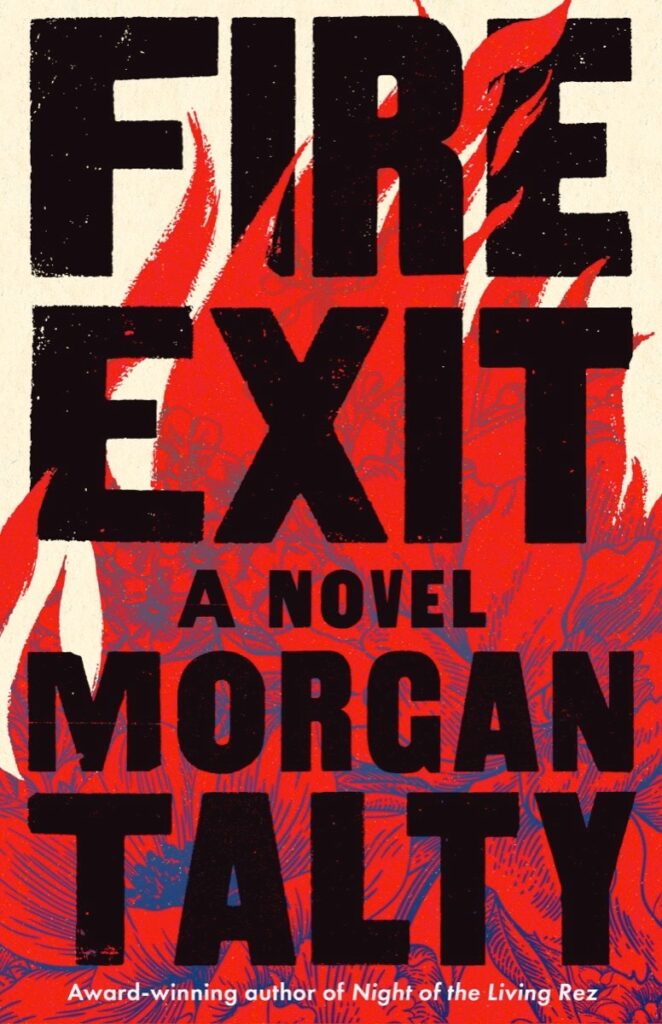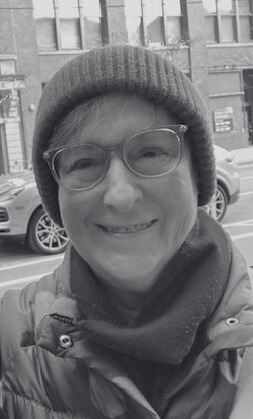A Review of Morgan Talty’s Fire Exit
By Maud Lavin
Morgan Talty’s novel, Fire Exit, is about ill fits among blood, belonging, and love. Set on the Penobscot River with the Reservation on one side and extraneous whites on the other, the story is also about parenting, about stepfathers raising kids with devotion, about missing or secret bioparents, about a terrible father, about a mother drifting deep into dementia. It’s about the Penobscot Tribe’s use of the colonialist blood quantum, or percentage of Native blood, to determine citizenship. And while not a treatise against this requirement, it’s certainly no testament for it. Many of the novel’s characters are of mixed race or, it seems, wish they were. Subthemes include madness, drinking, and homophobic violence (and surviving despite same). Blended with intricate accounts of love are questions about which stories need to be told and which stories might ruin someone’s life.
Fire Exit is one hell of a well-told tale. I couldn’t put it down. Emotionally, the book dances between upsetting and soothing.
The protagonist is Charles, who is white and grew up on the Penobscot Reservation with a Native stepdad and a white mother. Because he doesn’t have the required 25% blood quantum, he is forced to move off the reservation when he turns 18. He lives just across the river and watches as his daughter, Elizabeth, is raised by her Native stepdad and Charles’s former girlfriend, who is of mixed race, self-defines (and is defined by the tribe) as Native, and wants to raise Elizabeth as Native. Charles’s daughter doesn’t know she’s his daughter. Meanwhile, Charles’s own mother floats deeper into dementia. In her lucid moments, she blames Charles for a tragedy in their lives, even as he attempts to care for her. However, despite this heavy load, Fire Exit is a strangely affirming novel.
Like Talty’s previous book, the award-winning story collection Night of the Living Rez, a strong through line that Talty offers his readers is enduring bonds among the main male characters. Talty captures friendship’s elusive, day-to-day characteristics. He’s great at describing guys passing time together. Charles is a loner and has only two close friends, one from his childhood, Gizos, who is Penobscot and gay, and one from his adult years, Bobby, generous, white, and drunk. The friendships are not redemptive, they are real. They are formed from hanging out. Hours upon hours, both days and evenings, of hanging out. Making bad decisions together. Having fun. Participating in small and large betrayals. Accepting each other. Wry humor, utter boredom, bad advice. Bobby helps take care of Charles’s mother but he’s no saint. Gizos and Charles have an uneven relationship, one that has to deal with Gizos’s horrible father. The friends don’t solve each other’s lives. But it’s through the time they spend together that they express love. These persistent, uneven friendships are reassuring in their portrayal.
Fire Exit also stands out as it poses a moral question to readers that has no clear answer. Should Charles tell his daughter that she’s his daughter? This would put profound pressure on her sense of self, her blood quantum, her mental health, her corporeal history. Throughout the novel, readers are given hints as to why yes might be the moral choice or no might be. I’m not going to list them here. The novel unscrolls masterfully as story and offers a series of questions about stories. But I will share that in reading it, I was surprised to find myself wavering about the moral nuances of the answer. The story moves quickly, yet still finds moments to ponder how,
“…blood is messy, and it stains in ways that are hard to clean, especially if that stain can’t be seen but we know it is there, a trail or red or dark red leading back to a time we cannot go to remove it. Or that red or dark red is our timeline, and if we could clean it away, then it would be some type of self-erasure, no different from the ways I’ve seen Native people erase their own kind.”
Talty tells us in a note at the novel’s start that he is 25% Penobscot, shows us that these questions are personal, but asserts that the connections and feelings between people are more important to him than blood.
Talty’s writing is liquid, his plot fast paced, his portrayal of the draw and clumsiness of emotions compelling, his characters wildly imperfect, and his questions unanswerable. I love this book.

Read Maud’s other reviews for Reckon here.

Maud Lavin
A Pushcart Prize and Best of the Net nominee, Maud Lavin writes creative nonfiction, fiction, and poetry. She has published recently in BULL, Cowboy Jamboree, Reckon Review, JAKE, Icebreakers, BRIDGE, Heimat Review, Harpy Hybrid, and Roi Fainéant, and earlier in the Nation, Harper’s Bazaar, Slate, and other venues. One of her books, CUT WITH THE KITCHEN KNIFE (Yale UP), was named a New York Times Notable Book. Her other books include CLEAN NEW WORLD and PUSH COMES TO SHOVE, both MIT Press, and three anthologies. Her writing has appeared in Chinese, Japanese, Korean, German, Dutch, Finnish, and Spanish, as well as English. This fall Cowboy Jamboree Press will publish her chapbook SILENCES, OHIO. She is a 4-H alumna and a Guggenheim Fellow.
